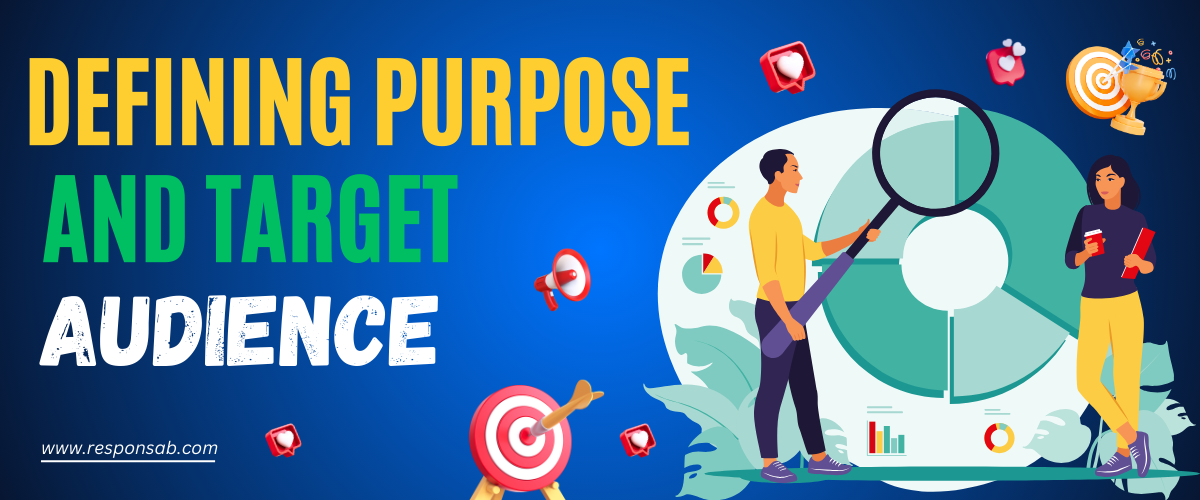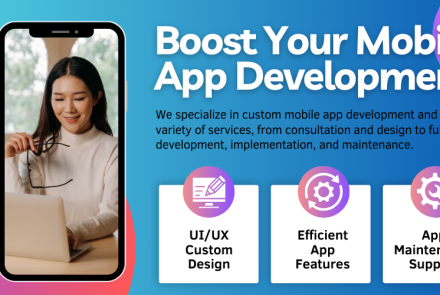In the digital realm, your website is more than just a virtual storefront; it's a dynamic platform that represents your brand, engages your audience, and drives your business objectives forward. However, to truly harness the power of your online presence, you must start with a clear understanding of two fundamental elements: purpose and audience. In this article, we'll delve into the importance of defining the purpose of your website and identifying your target audience, and how doing so can contribute to a more SEO-friendly and effective online presence.
Defining the Purpose of Your Website
The purpose of your website serves as its guiding principle, shaping its design, content, and functionality. Before diving into the intricate details of web development, take a step back and ask yourself: What do I hope to achieve with this website? Are you aiming to showcase your products or services, generate leads, provide valuable information, or establish your brand as an industry authority? Once you've identified your primary goals, you can begin to tailor your website to fulfill those objectives.
Key Points:
- Clarity: Ensure that the purpose of your website is clear and easily understandable to visitors. Avoid ambiguity and focus on conveying your message concisely.
- Alignment with Brand Values: Your website's purpose should align with your brand values and overall business objectives. It should reflect the essence of your brand and what sets you apart from competitors.
- User-Centric Approach: Keep your target audience in mind when defining your website's purpose. What do they need or expect from your website? How can you provide value and meet their needs effectively?
Identifying Your Target Audience
Understanding your target audience is essential for creating a website that resonates with users and drives meaningful engagement. Your target audience encompasses the individuals or groups most likely to be interested in your products, services, or content. To identify your target audience, consider factors such as demographics, interests, behaviors, and pain points. Conducting market research and analyzing your existing customer base can provide valuable insights into who your audience is and what they're looking for.
Key Points:
- Demographic Information: Define the demographics of your target audience, including age, gender, location, income level, and occupation. This information helps you tailor your content and messaging to resonate with specific demographic groups.
- Psychographic Insights: Dive deeper into your audience's psychographic characteristics, such as interests, values, attitudes, and lifestyle preferences. Understanding these factors allows you to create content that speaks directly to their needs and aspirations.
- User Personas: Develop detailed user personas representing different segments of your target audience. These personas serve as fictional representations of your ideal customers and help guide your content creation and marketing strategies.
Crafting an SEO-Friendly Approach
Once you've defined the purpose of your website and identified your target audience, you can leverage this knowledge to optimize your website for search engines. An SEO-friendly approach involves strategically incorporating relevant keywords, creating high-quality content, optimizing meta tags, and enhancing user experience—all with the aim of improving your website's visibility and ranking in search engine results pages (SERPs).
Key Points:
- Keyword Optimization: Conduct keyword research to identify the terms and phrases your target audience is searching for. Integrate these keywords naturally into your website's content, headings, meta tags, and URLs to improve search engine visibility.
- Content Quality and Relevance: Create informative, engaging, and valuable content that addresses the needs and interests of your target audience. High-quality content not only attracts visitors but also encourages them to stay on your site longer and return for future visits.
- User Experience (UX) Design: Design your website with the user in mind, prioritizing ease of navigation, mobile responsiveness, fast loading times, and intuitive interface design. A positive user experience not only enhances engagement but also signals to search engines that your site is trustworthy and authoritative.
In conclusion, defining the purpose of your website and understanding your target audience are foundational steps in building an SEO-friendly online presence. By aligning your website's objectives with the needs and preferences of your audience, you can create a compelling and effective digital platform that attracts visitors, drives conversions, and achieves your business goals.
Ready to optimize your website for search engines and enhance your online presence? Contact responsab.com today to learn how our tailored solutions can help you reach your target audience and achieve measurable results.







